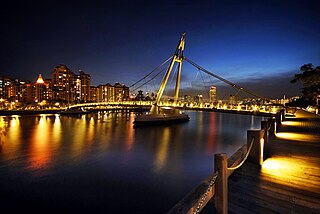
Kallang is a planning area and residential zone located in the Central Region of Singapore.

Yishun, formerly known as Nee Soon, is a residential town located in the northeastern corner of the North Region of Singapore, bordering Simpang and Sembawang to the north, Mandai to the west, the Central Water Catchment to its southwest, Ang Mo Kio to its south, as well as Seletar and Sengkang to its east and southeast respectively.

Chinatown is a subzone and ethnic enclave located within the Outram district in the Central Area of Singapore. Featuring distinctly Chinese cultural elements, Chinatown has had a historically concentrated ethnic Chinese population.

Bedok is a planning area and residential town located in the geographical region of Tanah Merah along the south-eastern coast of the East Region of Singapore. Bedok is bounded by five other planning areas: Paya Lebar to the north, Hougang to the northwest, Tampines to the northeast and east, Geylang to the west and Marine Parade to the southwest. It also shares a maritime boundary with the Singapore Strait to the south and southeast.
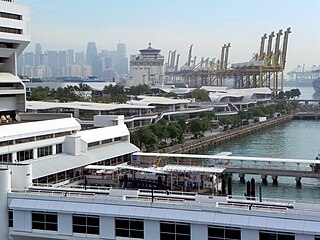
Bukit Merah, also known as Redhill, is a planning area and new town situated in the southernmost part of the Central Region of Singapore. the planning area borders Tanglin to the north, Queenstown to the west and the Downtown Core, Outram and Singapore River planning areas of the Central Area to the east.

Dunman High School (DHS) is a co-educational government autonomous secondary school located in Kallang, Singapore, offering the Integrated Programme and the Special Assistance Plan (SAP). It was originally located in West Kallang.

Jurong East is a planning area and residential town situated in the West Region of Singapore. It borders Jurong West and Boon Lay to the west, Clementi to the east, Tengah and Bukit Batok to the north and Selat Jurong to the south.

Telok Ayer MRT station is an underground Mass Rapid Transit (MRT) station on the Downtown line (DTL). Situated in Outram, Singapore, the station serves various offices and commercial developments around the junction of Cross Street and Telok Ayer Street. The station is operated by SBS Transit.

Lau Pa Sat, also known as Telok Ayer Market, is a historic building located within the Downtown Core in the Central Area of Singapore. It was first built in 1824 as a fish market on the waterfront serving the people of early colonial Singapore and rebuilt in 1838. It was then relocated and rebuilt at the present location in 1894. It is currently a food court with stalls selling a variety of local cuisine.

New Bridge Road is a major one-way road located within the Central Area in Singapore.
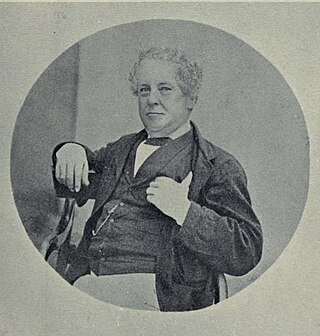
Thomas Dunman (1814–1887) was an Englishman who served as the first Commissioner of Police in Singapore, Straits Settlements from 1856 to 1871.

Kim Seng Road is a street in Singapore that runs along the upper-easternmost portion of the Bukit Merah-Central Area border. It was named after Peranakan philanthropist, Tan Kim Seng. Today, the boundaries of Kim Seng division are: Indus Road and Alexandra Canal in the north; Jalan Bukit Ho Swee in the south; Kim Seng Road and Outram Road in the east; and Lower Delta Road in the west.
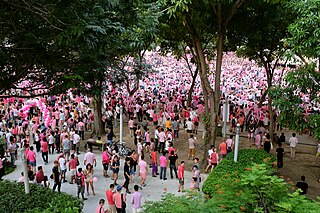
Pink Dot SG, known endonymously as Pink Dot, is a pride event that has occurred annually since 2009 in support of the LGBT community in Singapore. Attendees of Pink Dot events gather to form a "pink dot" to show support for inclusiveness, diversity and the freedom to love in the country. Pink Dot events typically include concert performances and booths sponsored by organizations that support the LGBT community and cause in addition to the event's name-brand formation.
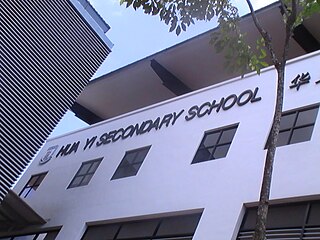
Hua Yi Secondary School is a government secondary school located in Jurong West, Singapore.
Hong Kah is a residential precinct in Jurong West, Singapore. It is bounded by the PIE, Corporation Road, Jurong Canal Drive, Jurong East Avenue 1 and Jurong Town Hall Road. It is named after the former 'Hong Kah Village'.

The Speakers' Corner in Singapore is an area located within Hong Lim Park at the Downtown Core district, whereby Singaporeans may demonstrate, hold exhibitions and performances, as well as being able to engage freely in political open-air public speeches, debates and discussions. As a free speech zone, it is based upon the premise of its namesake, Speakers' Corner, which was first launched at Hyde Park in London and has since been established in many other countries with a political system of representative democracy.
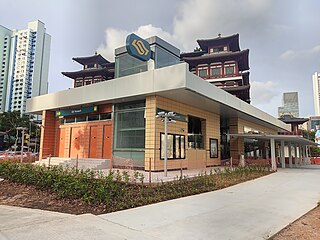
Maxwell MRT station is an underground Mass Rapid Transit (MRT) station on the Thomson–East Coast line (TEL) in Singapore. Situated in the Downtown Core and Outram along Neil Road, the station is near the Buddha Tooth Relic Temple and Museum, Sri Mariamman Temple and the Maxwell Food Centre. The station is operated by SMRT Trains.
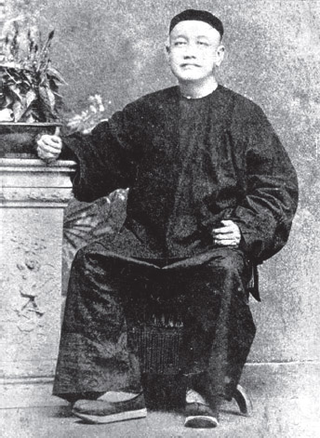
Cheang Hong Lim JP was a Chinese opium merchant and philanthropist in Singapore. He was recognised by the British colonial administration as head of the local Hokkien Chinese community.


































